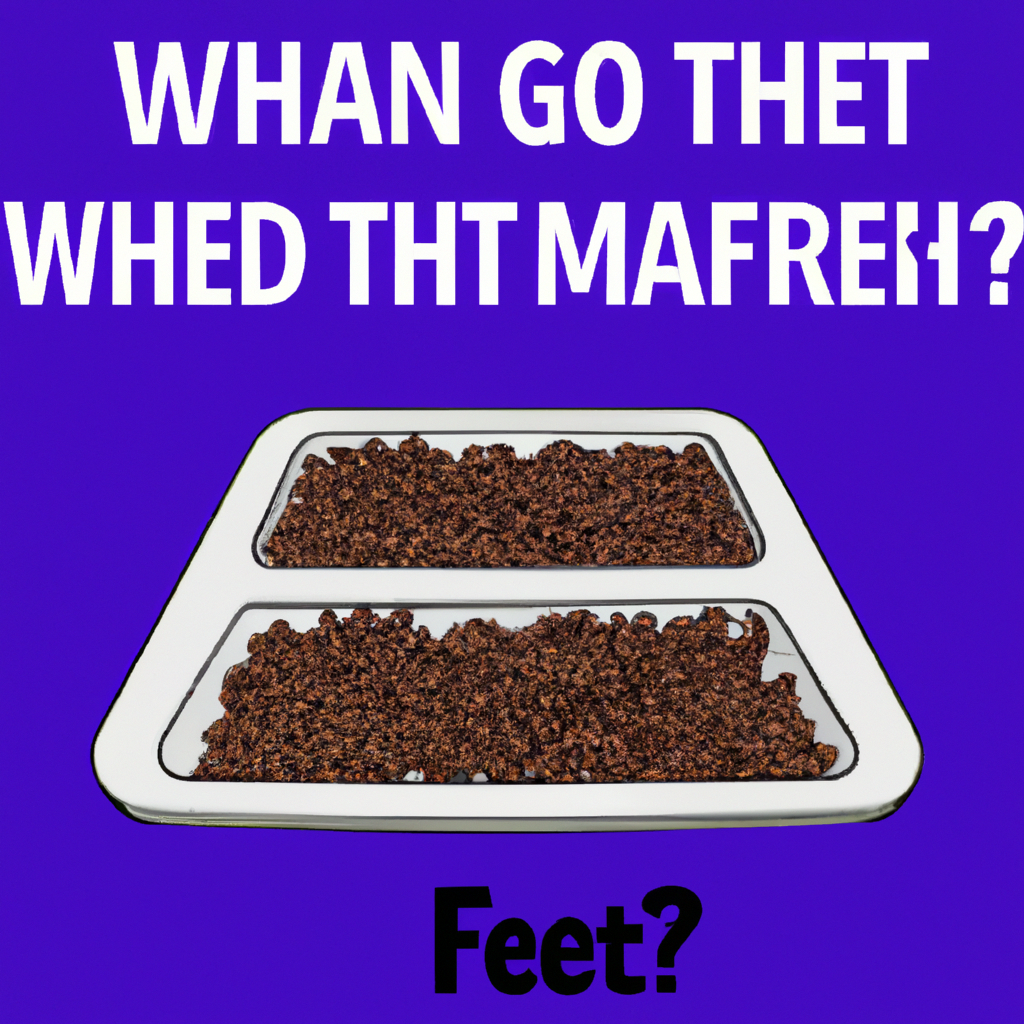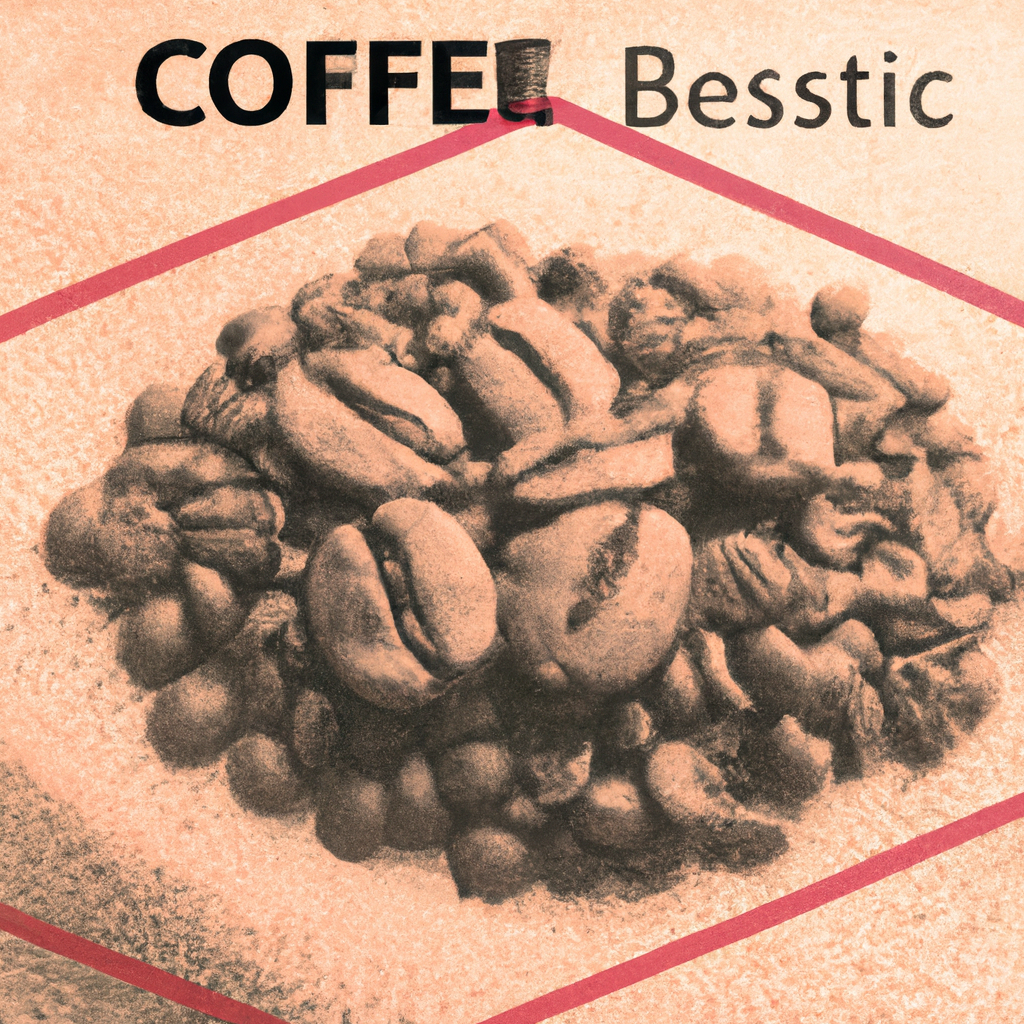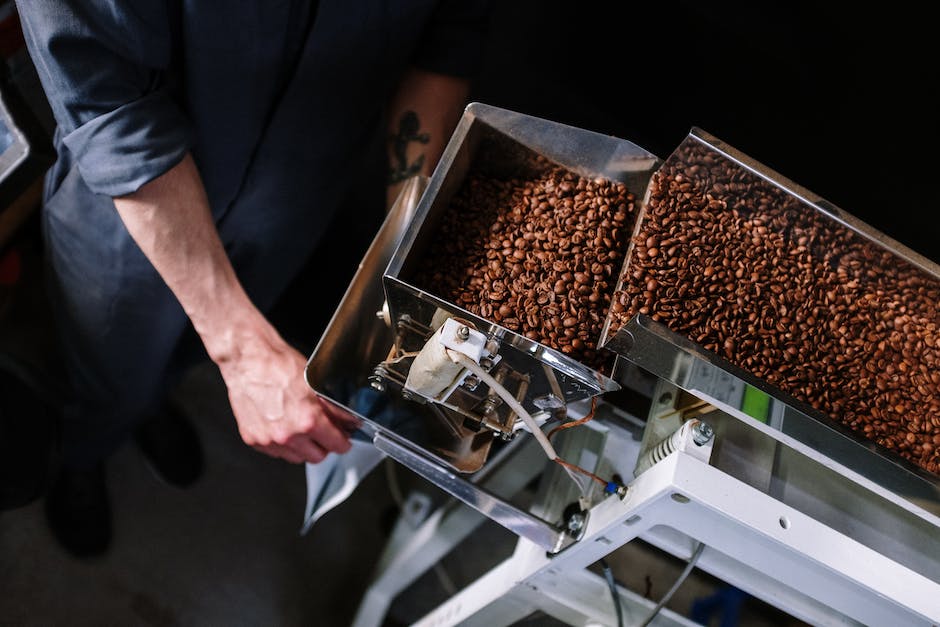-
Table of Contents
- Introduction
- The Origins of Coffee Beans and Espresso Beans
- The Roasting Process: How it Affects the Flavor of Coffee and Espresso Beans
- Brewing Methods: Which is Best for Coffee Beans vs. Espresso Beans
- Caffeine Content: How Coffee Beans and Espresso Beans Compare
- Tasting Notes: The Flavor Profiles of Coffee Beans and Espresso Beans
- Conclusion
Introduction
Coffee beans and espresso beans are often used interchangeably, but they are actually two different types of beans. While both come from the same coffee plant, they are roasted differently and have distinct characteristics that make them unique. In this article, we will explore the differences between coffee beans and espresso beans.
The Origins of Coffee Beans and Espresso Beans
Coffee is one of the most popular beverages in the world, with millions of people consuming it every day. It is a drink that is enjoyed for its rich flavor and energizing effects. However, not all coffee is created equal. There are different types of coffee beans, each with its own unique flavor profile and characteristics. One of the most common questions that coffee lovers ask is whether coffee beans and espresso beans are different. In this article, we will explore the origins of coffee beans and espresso beans to answer this question.
Coffee beans are the seeds of the Coffea plant, which is native to tropical regions of Africa. The plant produces small, red berries that contain the coffee beans. The beans are harvested, dried, and roasted to produce the coffee that we all know and love. There are two main types of coffee beans: Arabica and Robusta. Arabica beans are considered to be of higher quality and have a more complex flavor profile, while Robusta beans are more bitter and have a higher caffeine content.
Espresso beans, on the other hand, are not a different type of bean. Instead, they are simply a method of preparing coffee. Espresso is a concentrated form of coffee that is made by forcing hot water through finely ground coffee beans under high pressure. The result is a thick, creamy, and intense coffee that is enjoyed by many coffee lovers around the world.
So, why are espresso beans often marketed as a separate type of coffee bean? The answer lies in the roasting process. Espresso beans are typically roasted for a longer period of time than regular coffee beans. This results in a darker roast and a more intense flavor profile. The longer roasting time also reduces the acidity of the coffee, which makes it less bitter and more palatable.
Another factor that contributes to the difference between coffee beans and espresso beans is the grind. Espresso beans are ground much finer than regular coffee beans. This is because the water is forced through the coffee at a high pressure, and a fine grind allows for a more even extraction. Regular coffee beans, on the other hand, are ground coarser to allow for a slower extraction process.
In conclusion, coffee beans and espresso beans are not different types of beans. Instead, espresso is simply a method of preparing coffee that uses finely ground coffee beans and high pressure to produce a concentrated and intense coffee. The difference in flavor between regular coffee and espresso is due to the roasting process and the grind of the beans. So, the next time you order a cup of coffee, remember that the type of bean used is not as important as the method of preparation and the roast level.
The Roasting Process: How it Affects the Flavor of Coffee and Espresso Beans
Coffee is one of the most popular beverages in the world, with millions of people consuming it every day. However, not all coffee is created equal, and there are many different types of coffee beans that can be used to make coffee. One of the most common questions that people ask is whether coffee beans and espresso beans are different. The answer is yes, they are different, and the main difference lies in the roasting process.
The roasting process is the most critical step in determining the flavor of coffee and espresso beans. During the roasting process, the beans are heated to a high temperature, which causes them to undergo a series of chemical reactions that give them their unique flavor. The longer the beans are roasted, the darker and more intense the flavor becomes.
Coffee beans are typically roasted for a longer period than espresso beans. This is because coffee is brewed using a drip or pour-over method, which requires a coarser grind and a longer brewing time. The longer brewing time allows the coffee to extract more flavor from the beans, which is why coffee beans are roasted for a longer period.
Espresso, on the other hand, is brewed using a high-pressure method that requires a finer grind and a shorter brewing time. The shorter brewing time means that the espresso needs to extract as much flavor as possible from the beans in a shorter period. To achieve this, espresso beans are roasted for a shorter period than coffee beans, which gives them a lighter and less intense flavor.
The roasting process also affects the acidity of the beans. Coffee beans that are roasted for a longer period tend to have a lower acidity level, while beans that are roasted for a shorter period have a higher acidity level. This is because the longer roasting time breaks down the acids in the beans, which results in a smoother and less acidic flavor.
Espresso beans, on the other hand, are roasted for a shorter period, which means that they retain more of their acidity. This gives espresso a bright and tangy flavor that is perfect for cutting through milk-based drinks like lattes and cappuccinos.
In addition to the roasting process, the type of bean used can also affect the flavor of coffee and espresso. Arabica beans are the most common type of coffee bean and are known for their smooth and sweet flavor. Robusta beans, on the other hand, are more bitter and have a higher caffeine content. Espresso is typically made using a blend of both Arabica and Robusta beans, which gives it a unique flavor profile.
In conclusion, coffee beans and espresso beans are different, and the main difference lies in the roasting process. Coffee beans are roasted for a longer period, which gives them a darker and more intense flavor, while espresso beans are roasted for a shorter period, which gives them a lighter and less intense flavor. The type of bean used can also affect the flavor of coffee and espresso, with Arabica beans being smoother and sweeter, and Robusta beans being more bitter and higher in caffeine. Understanding these differences can help you choose the right type of bean for your preferred brewing method and taste preferences.
Brewing Methods: Which is Best for Coffee Beans vs. Espresso Beans
Are Coffee Beans And Espresso Beans Different?
Coffee and espresso are two of the most popular beverages in the world. While they both come from coffee beans, they are prepared differently and have distinct flavors. But are coffee beans and espresso beans different? The answer is yes and no.
Coffee beans and espresso beans are both derived from the same plant, Coffea arabica or Coffea robusta. The difference lies in the way they are roasted and ground. Coffee beans are roasted for a longer time at a lower temperature, resulting in a medium to dark roast. Espresso beans, on the other hand, are roasted for a shorter time at a higher temperature, resulting in a darker roast.
The difference in roasting affects the flavor profile of the beans. Coffee beans have a milder, more balanced flavor with notes of chocolate, nuts, and fruit. Espresso beans have a bolder, more intense flavor with notes of caramel, chocolate, and even tobacco.
Another difference between coffee beans and espresso beans is the grind size. Coffee beans are ground coarser, while espresso beans are ground finer. This is because espresso is brewed under high pressure, and a fine grind allows for a more even extraction of flavor. A coarse grind, on the other hand, is better suited for drip coffee or French press.
Brewing Methods: Which is Best for Coffee Beans vs. Espresso Beans
When it comes to brewing methods, there are several options for both coffee beans and espresso beans. Let’s take a look at some of the most popular methods and which beans are best suited for each.
Drip Coffee: Drip coffee is the most common method of brewing coffee. It involves pouring hot water over ground coffee beans in a filter, which then drips into a carafe. This method is best suited for medium to dark roast coffee beans.
French Press: French press is a manual brewing method that involves steeping coarse ground coffee beans in hot water for several minutes before pressing the plunger down to separate the grounds from the liquid. This method is best suited for medium to dark roast coffee beans.
Pour Over: Pour over is a manual brewing method that involves pouring hot water over ground coffee beans in a filter that sits on top of a carafe or mug. This method is best suited for medium to light roast coffee beans.
Espresso: Espresso is a concentrated shot of coffee that is brewed under high pressure using finely ground espresso beans. This method is best suited for dark roast espresso beans.
Conclusion
In conclusion, coffee beans and espresso beans are different in terms of roasting, grind size, and flavor profile. Coffee beans are roasted for a longer time at a lower temperature, resulting in a milder flavor with notes of chocolate, nuts, and fruit. Espresso beans are roasted for a shorter time at a higher temperature, resulting in a bolder flavor with notes of caramel, chocolate, and even tobacco. The grind size also differs, with coffee beans ground coarser and espresso beans ground finer. When it comes to brewing methods, there are several options for both coffee beans and espresso beans, with each method best suited for a particular roast. Whether you prefer coffee or espresso, understanding the differences between the two can help you choose the best beans and brewing method for your taste preferences.
Caffeine Content: How Coffee Beans and Espresso Beans Compare
Are Coffee Beans And Espresso Beans Different?
Coffee is one of the most popular beverages in the world, and it comes in many different forms. From drip coffee to espresso, there are many ways to enjoy this delicious drink. But are coffee beans and espresso beans different? The answer is yes, they are.
One of the main differences between coffee beans and espresso beans is the way they are roasted. Coffee beans are typically roasted for a longer period of time than espresso beans. This results in a darker roast and a stronger flavor. Espresso beans, on the other hand, are roasted for a shorter period of time, resulting in a lighter roast and a milder flavor.
Another difference between coffee beans and espresso beans is the grind. Coffee beans are typically ground coarser than espresso beans. This is because the water used to make coffee is in contact with the beans for a longer period of time, so a coarser grind is needed to prevent the coffee from becoming too bitter. Espresso, on the other hand, is made by forcing hot water through finely ground coffee beans at high pressure. This requires a finer grind to ensure that the water can pass through the coffee quickly and evenly.
But what about caffeine content? Many people believe that espresso has more caffeine than regular coffee, but this is not necessarily true. In fact, the amount of caffeine in a cup of coffee or espresso can vary depending on a number of factors, including the type of bean, the roast, and the brewing method.
Generally speaking, a shot of espresso contains less caffeine than a cup of coffee. This is because espresso is typically served in smaller portions than coffee. However, if you were to compare the caffeine content of a single espresso shot to a single cup of coffee, the espresso would likely have more caffeine. This is because the coffee used to make espresso is typically a darker roast, which contains more caffeine than lighter roasts.
It’s also worth noting that the way you prepare your coffee or espresso can affect the caffeine content. For example, if you add milk or cream to your coffee or espresso, this will dilute the caffeine content. Similarly, if you use decaf coffee or espresso beans, you won’t get the same caffeine boost as you would with regular beans.
So, are coffee beans and espresso beans different? Yes, they are. While they may look similar, they are roasted differently and ground differently, resulting in different flavors and brewing methods. When it comes to caffeine content, it’s important to consider the type of bean, the roast, and the brewing method to determine which has more caffeine. Ultimately, the choice between coffee and espresso comes down to personal preference. Whether you prefer a strong, bold coffee or a smooth, mellow espresso, there’s a bean out there for everyone.
Tasting Notes: The Flavor Profiles of Coffee Beans and Espresso Beans
Are Coffee Beans And Espresso Beans Different?
Coffee is one of the most popular beverages in the world, and it comes in many different forms. From drip coffee to espresso, there are many ways to enjoy this delicious drink. But are coffee beans and espresso beans different? The answer is yes, they are.
Coffee beans and espresso beans come from the same plant, but they are roasted differently. Coffee beans are roasted for a longer period of time at a lower temperature, while espresso beans are roasted for a shorter period of time at a higher temperature. This difference in roasting affects the flavor profile of the beans.
Coffee beans have a wide range of flavor profiles, depending on where they are grown and how they are roasted. Some coffee beans have a fruity or floral flavor, while others have a nutty or chocolatey flavor. The flavor profile of coffee beans can also be affected by the brewing method used. For example, drip coffee tends to have a milder flavor than espresso.
Espresso beans, on the other hand, have a more intense flavor profile. They are roasted for a shorter period of time at a higher temperature, which gives them a darker color and a stronger flavor. Espresso beans tend to have a more bitter flavor than coffee beans, which is why they are often paired with milk or sugar to balance out the flavor.
When tasting coffee beans and espresso beans, it is important to pay attention to the flavor profile. Coffee beans tend to have a more complex flavor profile, with different notes of flavor coming through as you drink it. Espresso beans, on the other hand, have a more straightforward flavor profile, with a strong and bold flavor that is easy to identify.
When tasting coffee beans, it is important to pay attention to the acidity, body, and flavor notes. Acidity refers to the brightness or sharpness of the coffee, while body refers to the weight or thickness of the coffee. Flavor notes refer to the different flavors that can be detected in the coffee, such as chocolate, fruit, or nutty flavors.
When tasting espresso beans, it is important to pay attention to the crema, body, and flavor notes. Crema refers to the layer of foam that forms on top of the espresso, which can indicate the quality of the beans and the brewing process. Body refers to the thickness or weight of the espresso, while flavor notes refer to the different flavors that can be detected in the espresso, such as caramel, chocolate, or nutty flavors.
In conclusion, coffee beans and espresso beans are different in terms of their roasting process and flavor profile. Coffee beans tend to have a more complex flavor profile, while espresso beans have a more straightforward flavor profile. When tasting coffee beans and espresso beans, it is important to pay attention to the acidity, body, and flavor notes, as well as the crema and body in the case of espresso. Whether you prefer coffee or espresso, there is a wide range of flavors and profiles to explore.
Conclusion
Yes, coffee beans and espresso beans are different. While they both come from the same coffee plant, espresso beans are roasted longer and have a darker color and stronger flavor than regular coffee beans. Additionally, espresso beans are ground finer to create a more concentrated shot of coffee. Overall, the difference between coffee beans and espresso beans lies in their roast level and grind size, which affects their flavor and strength.





